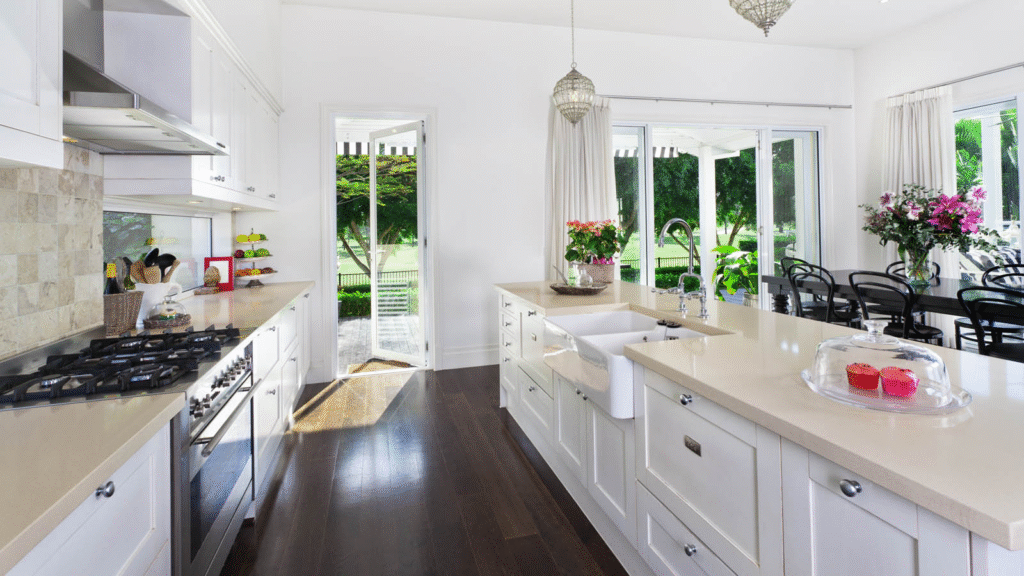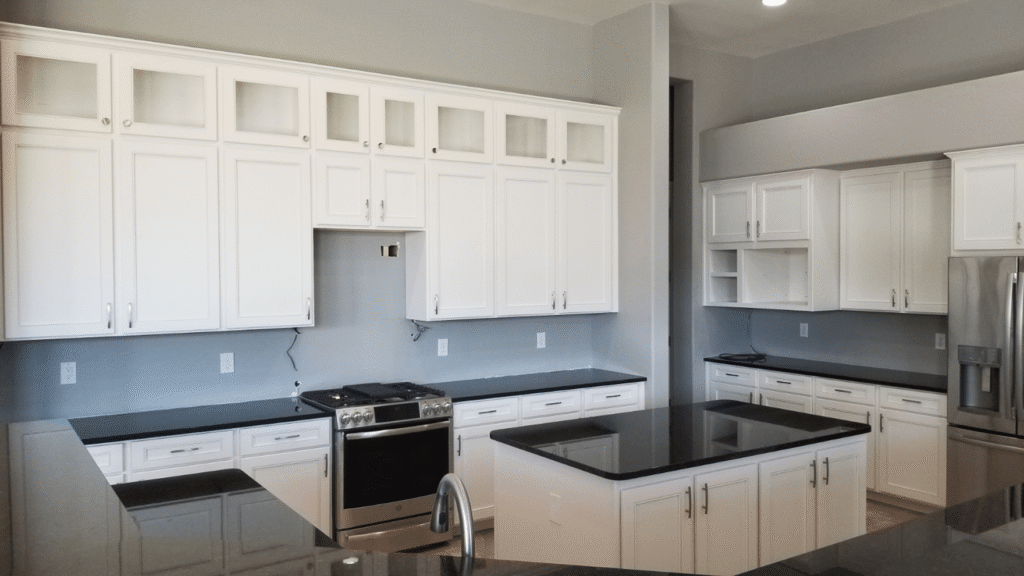Have you ever been in a kitchen showroom and felt so overwhelmed with the assortment of options of kitchen cabinets- styles, finishes, colors, and materials? You’re not alone. Selling to wholesale customers is not merely a case of what cabinets would be nice, but also what items would strike a balance between quality, functionality, and price. A bad choice will probably result in a high turnover, dissatisfied clients, or the loss of money. This is the reason why one has to know what to look into when ordering in large quantities.
The Design of Kitchen Cabinets.
Cabinets are not installed to keep things in: they somehow define the whole kitchen. Whether it is a contemporary flat-panel design, transitional shaker design, or rustic wood finish, the cabinets determine the aesthetic balance of the room. The wholesale buyers are expected to know the relationship between various fashions and consumer trends. Frameless cabinets, soft hinges, and eco-friendly finishes are much needed in the market today.
Material Matters
When comparing large quantities of cabinets, the basis of your choice is material. Solid wood, plywood, medium-density fiberboard (MDF), and particleboard are the most prevalent. Each has pros and cons:
Solid wood: Solid wood is quite perennial and very tough, but costly.
Playwood: This is durable, water-resistant, and stable, and therefore very popular with contractors.
MDF: Veneer is also finished on a smooth surface, but not so hard to bear heavy usage.
Particleboard: It is affordable, but when it encounters moisture, it will warp.
Cabinet Styles That Sell
The fashion faves differ depending on the location, yet some designs will always be top sellers. The Shaker cabinets with their clean lines and versatile appearance are still the best choice for homeowners. Flat, or slab, cabinets are used in minimalistic and modern kitchens, and raised-panel cabinets are used in traditional tastes. The variety of styles you can provide will give you a wide audience as buyers, including real estate developers, to furnish apartments to those who need to refurbish the kitchens of their families.

Regular Functionality and Hardware: under the Hood.
One can easily pay attention to the appearance of cabinets, but functionality is also required. Wholesale customers ought to inspect the methods of hardware and joinery adopted. Features like:
- Slamming means soft-close hinges.
- Glides to the full-extension, easily accessible drawers.
- Adjustable shelves to fit storage.
- Dovetail joints to accommodate high durability.
These little things may be the difference between the customers choosing among various suppliers. Quality hardware will minimize the number of complaints and enhance repeat business.
Finishes and Colors: Meeting market demand
Cabinet finishes are very significant in the decision-making of the buyers. Color trends are changing rapidly, and from matte painted cabinets in relaxing neutrals to the high gloss lacquered finishes of contemporary flair.
White is an all-time bestseller, and colors such as navy, forest green, and charcoal, which are considered bold, are becoming popular in high-end markets. Walnut and ash wooden stains remain popular among buyers who appreciate the stylishness of wood.
A wholesale buyer like you can consider the psychology of colors in the kitchen to keep track of the demand in the industry and to be ahead of the crowd.
Options for Customization and Sizing
The flexibility of stock cabinets, semi-custom, and full-custom is flexible. Normal inventory quantity is easily accessible and is therefore suitable in the event of a single or two fast turnovers. Semi-custom lines are slightly modified in terms of sizes and finish, and this suits renovators who do not require costly products but value individual ones.
Eco-friendly and Sustainability Choices
Sustainability is a major concern for the modern-day consumer. Towards this growing demand, wholesale buyers can be more aware of the low-VOC finishes, materials to comply with CARB2 standards, and wood certified by the FSC. The green certifications will not merely assist in the enhancement of the attractiveness of the sales, but they will also allow you to be a sophisticated supplier in the competitive market.
Price vs. Value
In the case of wholesale buying, it is not the price but the value. The upfront cost of investing in heavy, easy-assembled cabinets would be a little more, yet thousands would be saved in terms of refunds, replacement, and disgruntled clients. The purchaser needs to trade off unit cost and shipping, assembly time, and potential resale price.
Logistics and Supply Chain certainty.
It is not the decision of the right products that forms the basis of the cabinet. The wholesale purchasers must also ensure that the suppliers can deliver on time and on a regular basis. This kind of lag in supplying cabinets can put off whole renovation plans, and the result would be presented in the form of fines and lost reputation. Do not ignore the possibilities of suppliers, shipping, and the inventory management system.
Market Trends that have been driving sales of cabinets
The kitchen cabinet business is ever-changing. Current trends include:
- Open shelves with closed cabinets.
- Combined lighting to beautify and function.
- Two-tone kitchens, where the vertical and bottom cabinets are contrasted.
- Smart storage products such as drawers, pulled-out spice racks, and under-the-floor drawers
The ability of wholesale buyers to keep up with such trends will enable them to forecast the demand and prevent the stagnant stock.
Testing Samples before Bulk Orders
Ever make a big order and not test physical samples? Examine the surface, finish, and strength. Test hinges, drawer slides, and assembly are easy. Request your supplier to provide specifications that include details about thickness and source material, and finish life. Thousands of dollars in future returns would be saved by a close assessment at the beginning.
Developing Long-term Relationships with Suppliers
Relations are important in wholesale purchasing. Working with a supplier who allows delivering after-sales services, warranty, and is flexible with shipping guarantees long-term security. Most of the suppliers go to the extent of providing marketing assistance like product catalogues, 3D renderings, and display of showrooms. Such extras have the ability to give you a competitive advantage when reselling cabinets in your market.

Final Decision-Making Checklist
Wholesale purchasers have to enquire before they are prepared to make any order of the cabinet:
- Does it have the right content for my target market?
- Are the finishes up to date with the current trends of design?
- Is the hardware high quality?
- Are the lead times of the supplier regular?
With such a checklist, buyers will be in a position to make decisions that would be more profitable and less risky.
Conclusion
In purchasing the appropriate kitchen cabinets at wholesale, it is not only a matter of what kind to get, but of the balance of design and strength and prices, and logistics. Every move you make will affect your profit margins, your reputation on the market with a wholesale buyer. When you consider the materials, finishes, functionality, type, and reliability of your suppliers, you are certain you are spending the money properly. You need to trust Atlantic Wholesale Kitchen, whether you are interested in the sourcing of the highest quality of cabinets, and you are backed by quality service.
